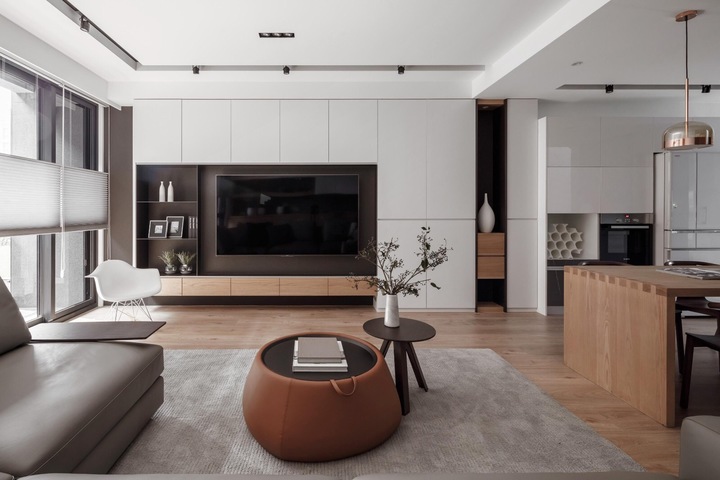Whether it is for the exterior or the interior of your house, you need to make sure that you choose the customized plywoods that will look beautiful and will last for a long time. To do that, you need to understand the differences between the different types of woods and what each has to offer. Besides that, you will also need to consider the thickness, the color, the moisture content and the perm rating.
Hardwood plywood
Plywood is a manmade product, made of thin layers of veneers, glued together at right angles. The resulting plywood is strong, light and economical. It is used for floors, sheathing, cabinetry and furniture.
Plywood can be purchased in many different species, sizes, thicknesses, colors and finishes. Its properties include its resistance to moisture and shrinkage.
Some plywoods are made with a foam rubber core. They are lightweight, have a flexible feel, and are perfect for lightweight applications such as acoustical panels or insulation.
Other types of plywood are made with a solid hardwood core. These are generally more stable than softwood. There are also pre-finished veneers, which add durability and resistance to moisture.
Hardwood plywood is a common choice in architectural and decorative applications. It is imported from mills in Europe, and available in a variety of species and sizes.
If you’re in the market for plywood, you should know a few things about it. First, it’s important to choose the right grade for your project. For example, if you plan to build cabinets, you may want to use grade A plywood.
This grade has a smooth face and is free of minor defects. However, it’s important to check for large voids, splinters, knotholes, and other imperfections.
You should also look at the back side of the plywood. While the front side is usually the highest quality, the back side is less appealing to the eye.
Another option is to paint the plywood. This is an inexpensive way to create a customized look. Painting a plywood panel is easy and will result in a smooth finish. When painting, make sure to use a base coat of primer and multiple coats of paint. Ideally, you’ll want to use an oil-based paint.
Plywood is a great option for many DIY projects. But if you have a limited budget, you can find cheaper alternatives.
One good alternative is Eko ply. It offers a more varied range of options than traditional plywood, and is perfect for bulk orders.
You’ll also want to be careful when choosing the thickness of plywood. The thickness of the plywood you select depends on the weather and the climate where your project will be located.
Decorative plywood
When it comes to designing a home, plywood is a material that continues to be used today. This simple engineered wood product is very versatile, affordable and offers a great variety of uses. It can be stained or painted, and provides a beautiful and custom appearance for any space.
There are several different grades of plywood, each with their own unique characteristics. Understanding the differences is crucial to choosing the right type for your project.
Grades of plywood can be easily categorized into two main categories. One is cabinet grade and the other is structural grade. The higher the grade, the better the quality of the wood. Cabinet grades feature smoother and more consistent grain. However, they also have imperfections that are not always aesthetically pleasing.
Interior plywood is used in most rooms of the home. It is a good choice for subfloors or hardwood flooring.
Hardwood plywood is a special type of plywood that is often used for decorative applications. This type of plywood is more durable and stronger than solid wood. While it is not waterproof, it resists damage from moisture.
There are also two types of interior plywood. One is a tongue and groove plywood that snaps together. Another is flexible plywood. These types are mainly used in custom designs. They can be bent into shapes, making it easy to create beautiful end products.
Architects have been using plywood for decades. It is used in furniture, cabinets and building sheathing. In the past, plywood was used primarily for packing cases. Modernist architects began experimenting with plywood design in the 1930s.
You can buy plywood at Home Depot. Depending on the grade, you can expect to pay less than you would for solid wood. A-grade plywood is typically the highest-quality. B-grade plywood has a smooth surface, but it may have some minor defects. C-grade plywood has discoloration and knot holes that can be up to 3 inches across.
Spruce and Nordic birch are both popular choices with architects. Spruce is lightweight and offers a characterful, knotted surface. Similarly, Nordic birch is dimensionally stable.
Exterior plywood
When choosing the best custom plywoods for your home, there are a number of things to consider. You can choose from many different types and grades of plywood, each of which is ideal for a certain project. Choosing the right type of plywood for your building is an important step toward achieving your desired look and durability.
Plywood is an engineered material that consists of thin layers of wood glued together. It is typically used for various applications, such as flooring, cabinet making and building sheathing. The material is lightweight and strong. In addition, it has a high strength to weight ratio, making it a suitable alternative to solid wood.
There are several types of plywood available, including hardwood and multi-ply. Each has its own advantages and disadvantages. For example, a higher grade hardwood plywood is a lot more resistant to moisture than lower grade plywood.
A multi-ply plywood is also more durable than a single-ply product. This is due to the fact that it is made up of more than seven plies.
A multi-ply panel has a refined look and is light in weight. It is also a good choice for environmental projects.
Plywood is also commonly used in floors, cabinetry, furniture, millwork, and fine furniture building. As it is made from wood that would otherwise go to waste, it is very cost-effective. Whether you are remodeling your own home or working on a commercial project, you should choose the right plywood to ensure you get the most out of your materials.
Structural plywood is a great choice for structural applications. These panels are ideally designed to resist damage from insects, water, and decay. They are usually manufactured using Formaldehyde-free glues.
Interior plywood is a good choice for subflooring. It is suitable for a wide range of uses, from carpeting to vinyl flooring. However, interior plywood is not waterproof, so it is not the perfect choice for exterior building.
Exterior plywood is more suited for structures that are going to face weather, such as roofs. It is also made to resist water and is covered with a roofing system.

